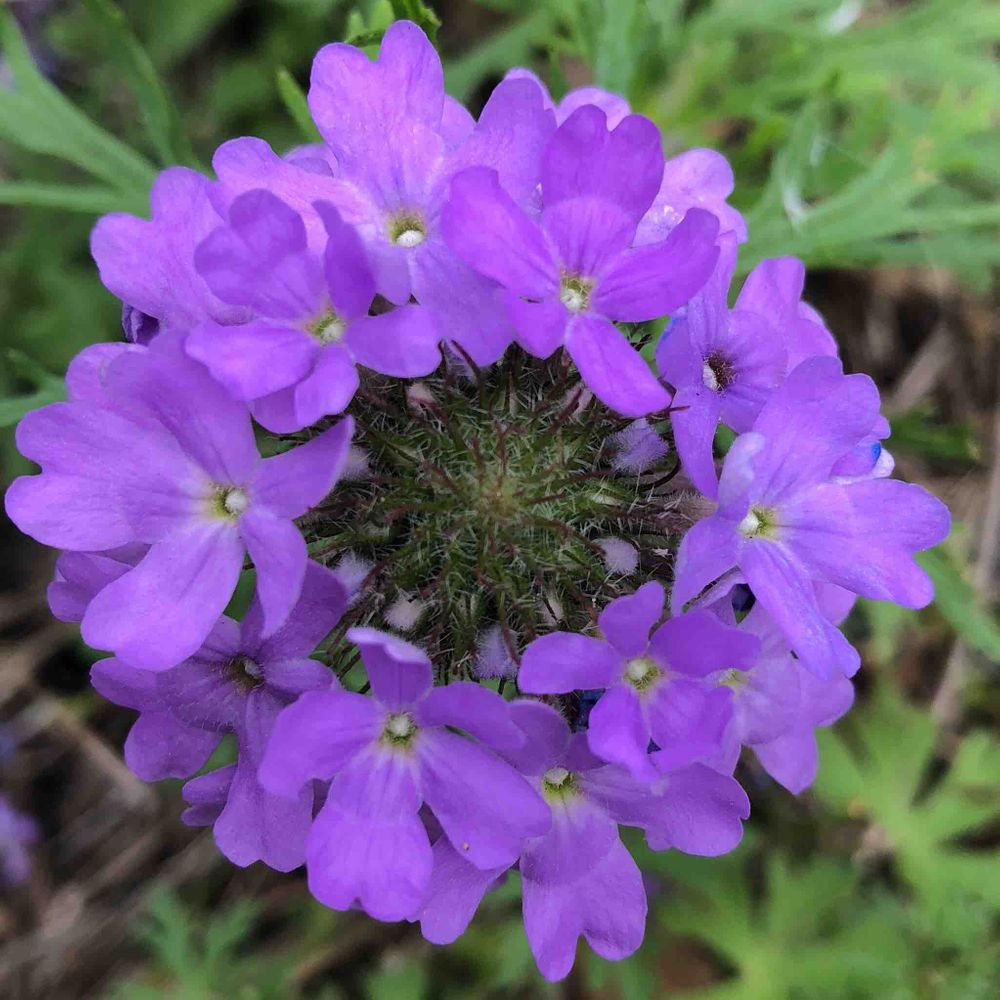Vervain
(Verbena)

Description
Verbena is a genus of flowering plants that belongs to the family Verbenaceae. This diverse genus includes approximately 250 species of annuals, perennials, and shrubs that are native to various regions across the world. In this article, we will explore the taxonomy, distribution, habitat, morphology, and uses of Verbena plants. Taxonomy: The genus Verbena was first described by Carl Linnaeus in 1753 in his seminal work, Species Plantarum. The name Verbena is derived from the Latin word "verbenae," which means sacred plants or herbs. The genus is classified under the family Verbenaceae, which comprises about 35 genera and 1,200 species. The family is characterized by simple, opposite leaves, inflorescences with small flowers, and fruit that splits into four nutlets. Distribution: Verbena species are widely distributed across the world, but they are most abundant in tropical and subtropical regions. The genus is particularly diverse in the Americas, where many species are native. Other regions with a significant number of Verbena species include Europe, Asia, and Africa. Habitat: Verbena species inhabit a wide range of habitats, including grasslands, meadows, woodlands, and scrublands. They are typically found in well-drained soils and prefer full sun to partial shade. Some species are adapted to specific environments, such as coastal sand dunes or rocky slopes. Morphology: Verbena species display a wide range of morphological diversity. Most species are herbaceous perennials, but some are annuals or shrubs. The leaves are typically simple, opposite, and toothed or lobed. The flowers are small, tubular, and clustered in inflorescences that can range from simple spikes to complex branched structures. The flower color varies from white, pink, and red to purple and blue. The fruit is a capsule that splits into four nutlets. Uses: Verbena plants have a variety of uses, both medicinal and ornamental. In traditional medicine, Verbena species have been used to treat a range of ailments, including respiratory problems, fever, and digestive disorders. Some species are also used as sedatives, anxiolytics, and anti-inflammatory agents. In horticulture, Verbena plants are popular for their showy and long-lasting flowers. They are widely used in borders, rock gardens, and containers. Many cultivars and hybrids have been developed with various flower colors and growth habits. Some species of Verbena are also used in the perfume industry for their essential oils, which are extracted from the flowers and leaves. These oils are used in a variety of products, including soaps, lotions, and perfumes. Selected species: There are approximately 250 species of Verbena, but some of the most well-known and commonly cultivated include: Verbena bonariensis: A tall, slender plant with clusters of small, purple flowers that bloom in late summer. It is often used in prairie-style plantings and as a butterfly attractant. Verbena hastata: A native North American species with tall spikes of blue-purple flowers that bloom in midsummer. It is commonly found in moist meadows and along stream banks. Verbena rigida: A low-growing plant with stiff, upright stems and clusters of small, pink or purple flowers that bloom in summer. It is often used in rock gardens and as a groundcover. Verbena x hybrida: A hybrid species that is widely cultivated for its showy flowers, which can be red, pink, purple, or white. It is often used in hanging baskets, containers, and borders.
Taxonomic tree:







